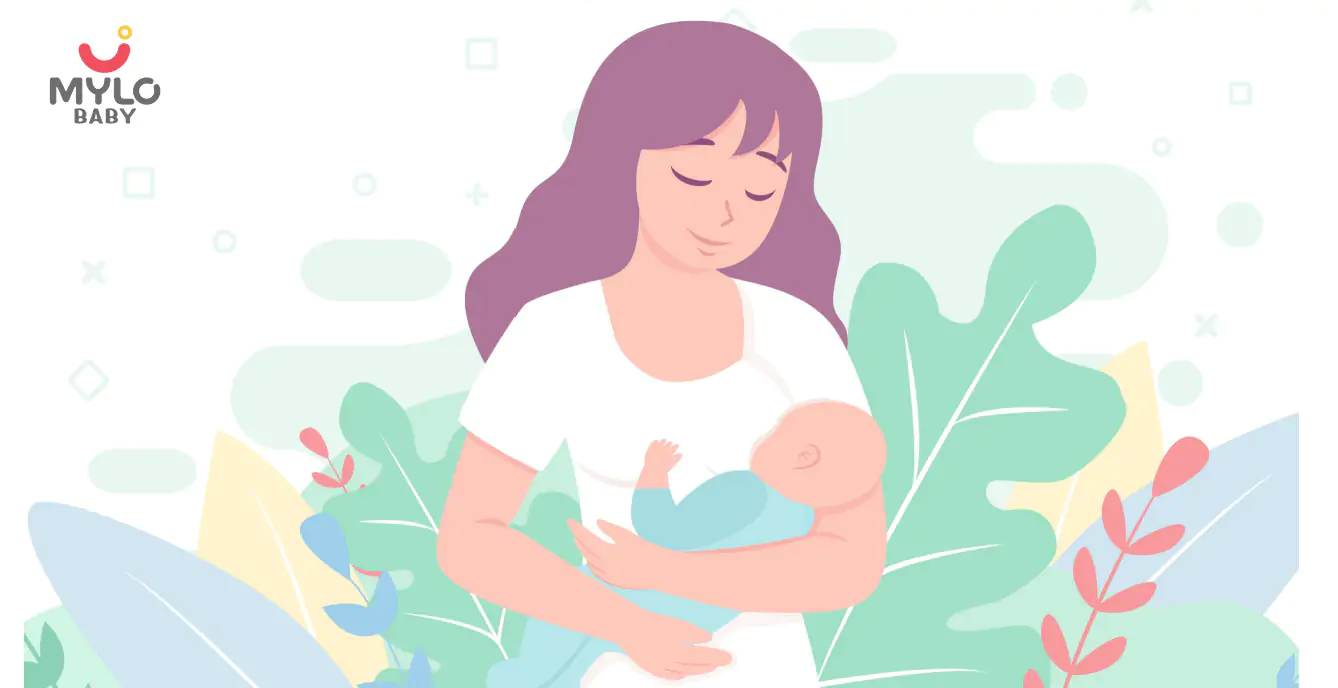Home

Braxton Hicks Contractions or Real Labor: How to Tell Them Apart?
In this Article

Pregnancy
Braxton Hicks Contractions or Real Labor: How to Tell Them Apart?
Updated on 6 February 2024
As the due date approaches, the anticipation and excitement of welcoming your little one can be both exhilarating and nerve-wracking. One of the mysteries of late pregnancy is the age-old question: "Are these contractions the real deal, or just another round of Braxton Hicks Contractions?" Don't worry, you're not alone in this puzzling predicament.
In this article, we're going to delve into the nitty-gritty of differentiating between Braxton Hicks and the onset of real labor. So, grab a cup of tea, get comfy, and let's unravel the secrets of those tummy tightenings together!
Braxton Hicks Meaning
What are Braxton Hicks? Braxton Hicks are sporadic uterine contractions that can occur during pregnancy. They are often referred to as "practice contractions" because they help to prepare the uterus for labor. These contractions are named after the British doctor who first described them, John Braxton Hicks, in the 19th century.
Unlike real labor contractions, Braxton Hicks contractions do not cause the cervix to dilate and are generally painless. However, they can still be uncomfortable and cause some confusion for pregnant women who are unsure if they are experiencing true labor or false.
Braxton Hicks Symptoms
Many women wonder what do Braxton Hicks contractions feel like so, let us understand the tell-tale signs of these contractions:
1. Tightening of the abdomen
One of the main signs of Braxton Hicks is a tightening or hardening of the abdomen. This sensation is often described as feeling like the belly is being squeezed or tightened.
2. Irregular contractions
Unlike real labor contractions, Braxton Hicks do not follow a regular pattern. They may come and go at irregular intervals, varying in duration and intensity.
3. No increase in intensity
Braxton Hicks typically do not increase in intensity over time. They may be uncomfortable or even slightly painful, but they do not become more intense with each contraction.
4. Relief with movement
Changing positions or engaging in gentle movement may provide some relief from Braxton Hicks. They may lessen or even stop altogether when you change your activity or position.
You may also like: 7 Signs of Labor: Know What to Expect
When Do Braxton Hicks Start?
Braxton Hicks contractions can start as early as the second trimester of pregnancy, but they are most commonly experienced in the third trimester. Some women may not notice them at all, while others may feel them more frequently and intensely.
The frequency and intensity of these contractions can vary from woman to woman and even from pregnancy to pregnancy. It is important to remember that every woman's experience with Braxton Hicks is unique.
Key Differences Between Braxton Hicks Contractions and Real Labor
Here are the major differences between real and false contractions:
1. Regular contractions
Real labor contractions occur at regular intervals and become closer together over time. Braxton Hicks, on the other hand, are irregular and do not follow a consistent pattern.
2. Increasing intensity
Real labor contractions gradually become more intense and painful as labor progresses. False contractions, on the other hand, generally do not increase in intensity.
3. Lower back pain
Real labor contractions often cause intense lower back pain, while Braxton Hicks typically do not.
4. Cervical changes
Real labor contractions cause the cervix to dilate and efface, while Braxton Hicks contractions do not lead to any changes in the cervix.
5. Progression of contractions
Real labor contractions usually become more frequent, longer, and stronger as labor progresses. Braxton Hicks may come and go without any consistent progression.
6. Water breaking
The rupture of the amniotic sac, also known as the water breaking, is a sign of real labor. Braxton Hicks do not cause the water to break.
7. Bloody show
A small amount of blood or mucus discharge, known as the bloody show, is a sign of real labor. It does not occur with Braxton Hicks contractions.
You may also like: Normal Delivery Tips: An Expecting Mother's Guide to a Smooth Childbirth Experience
Factors That Can Increase the Frequency of Braxton Hicks
There are several factors that can increase the frequency of Braxton Hicks. These include:
1. Dehydration
Not drinking enough water can lead to increased false contractions. Staying hydrated is important during pregnancy to prevent dehydration and minimize contractions.
2. Physical activity
Engaging in excessive physical activity or lifting heavy objects can trigger more frequent Braxton Hicks. It is important to listen to your body and avoid overexertion.
3. Full bladder
A full bladder can irritate the uterus and lead to more frequent contractions. Emptying your bladder regularly can help alleviate this.
4. Sexual activity
Sexual activity can stimulate the uterus and cause Braxton Hicks. If you experience discomfort or increased contractions after intercourse, it is best to consult with your healthcare provider.
5. Stress or anxiety
Stress and anxiety can contribute to an increase in false contractions. Finding ways to relax and manage stress, such as practicing relaxation techniques or engaging in activities you enjoy, can help reduce their frequency.
6. Multiple pregnancies
Women carrying multiples, such as twins or triplets, may experience more frequent Braxton Hicks contractions due to the increased pressure on the uterus.
7. Uterine irritability
Some women naturally have a more irritable uterus, which can lead to more frequent Braxton Hicks. This is not necessarily a cause for concern, but it is important to discuss any concerns with your healthcare provider.
You may also like: Which Is Better Normal Or Cesarean Delivery?
Tips to Manage Braxton Hicks
Here are some tips to manage false contractions:
1. Stay hydrated
Drinking plenty of water can help reduce the frequency of Braxton Hicks contractions. Aim to drink at least eight glasses of water per day.
2. Change positions
If you are experiencing uncomfortable Braxton Hicks contractions, try changing positions. Lying on your side or taking a warm bath may provide some relief.
3. Practice relaxation techniques
Relaxation techniques, such as deep breathing exercises, meditation, or prenatal yoga, can help alleviate the discomfort of Braxton Hicks contractions.
4. Avoid overexertion
Excessive physical activity can trigger more frequent Braxton Hicks. Listen to your body and avoid overexertion.
5. Empty your bladder regularly
A full bladder can irritate the uterus and lead to more frequent contractions. Emptying your bladder regularly can help reduce their occurrence.
6. Manage stress
Stress and anxiety can contribute to an increase in Braxton Hicks contractions. Find healthy ways to manage stress, such as practicing relaxation techniques or engaging in activities you enjoy.
You may also like: Follow These 6 Labor Tips and Rock Your First Birth
FAQs
1. What do Braxton Hicks contractions feel like?
Braxton Hicks are often described as a tightening or hardening of the abdomen. They may feel like the belly is being squeezed or tightened. Some women may also experience mild discomfort or a dull ache during these contractions.
2. Why am I having so many Braxton-Hicks contractions?
There are several factors that can contribute to an increase in Braxton Hicks. Dehydration, physical activity, a full bladder, stress, multiple pregnancies, and uterine irritability can all lead to more frequent contractions. If you are concerned about the frequency of your contractions, it is best to consult with your healthcare provider.
3. When to be concerned about Braxton Hicks?
In most cases, Braxton Hicks are a normal part of pregnancy and not a cause for concern. However, if you experience symptoms like contractions that become regular and increase in intensity, severe or persistent abdominal pain, vaginal bleeding or leaking of fluid from the vagina, it is important to contact your healthcare provider.
Key Takeaways
Braxton Hicks contractions are practice contractions that help prepare the uterus for labor. They are often painless and do not cause the cervix to dilate. Differentiating between Braxton Hicks and real labor can be challenging, but understanding the key differences and paying attention to your body's signals can help. If you have any concerns or questions about your contractions, it is always best to consult with your healthcare provider for guidance and reassurance.



Written by
Anupama Chadha
Anupama Chadha, born and raised in Delhi is a content writer who has written extensively for industries such as HR, Healthcare, Finance, Retail and Tech.
Read MoreGet baby's diet chart, and growth tips

Related Articles
Related Questions
Influenza and boostrix injection kisiko laga hai kya 8 month pregnancy me and q lagta hai ye plz reply me

Hai.... My last period was in feb 24. I tested in 40 th day morning 3:30 .. That is faint line .. I conculed mylo thz app also.... And I asked tha dr wait for 3 to 5 days ... Im also waiting ... Then I test today 4:15 test is sooooo faint ... And I feel in ma body no pregnancy symptoms. What can I do .

Baby kicks KB Marta hai Plz tell mi

PCOD kya hota hai

How to detect pcos

Related Topics
RECENTLY PUBLISHED ARTICLES
our most recent articles

Pregnancy Journey
Top 10 Tips For The Third Trimester Of Your Pregnancy

Maternity Benefits
Maternity Leave 101: Rules, Benefits & Timings for Expectant Working Women

Education
The A-Z Guide to Identifying Summer Vegetables for Kids

Baby Names
Christian Baby Girl Names That Stand the Test of Time

Education
The A-Z Guide on Purple Colour Fruits and Vegetables for Kids

Education
The A-Z Guide on Red Colour Fruits & Red Colour Vegetables for Kids
- The A-Z Guide on Yellow Fruits & Yellow Colour Vegetables for Kids
- Cervical Cancer: Causes, Symptoms & Prevention
- The A-Z Guide to Identifying Stem Vegetables for Kids
- Can Fetal Heartbeat Disappear and Reappear?
- The Ultimate Guide to Teaching Children 20 to 30 Tables
- GK Questions for Kids from Nursery to Class 6
- Height and Weight Chart for Boys and Girls in India
- The A-Z Guide to Identifying Winter Vegetables for Kids
- Dalia in Pregnancy: A Superfood for the Health of Both Mom and Baby
- 1st Birthday Wishes for Your Little One's Big Day
- The Ultimate Guide to Consuming Litchi During Pregnancy
- Almonds in Pregnancy: Cracking the Nutty Secret to Their Benefits
- Popping the Question: Is It Safe to Indulge in Popcorn in Pregnancy?
- Cherry Fruit in Pregnancy: What Every Expectant Mother Should Know


AWARDS AND RECOGNITION

Mylo wins Forbes D2C Disruptor award

Mylo wins The Economic Times Promising Brands 2022
AS SEEN IN
















- Mylo Care: Effective and science-backed personal care and wellness solutions for a joyful you.
- Mylo Baby: Science-backed, gentle and effective personal care & hygiene range for your little one.
- Mylo Community: Trusted and empathetic community of 10mn+ parents and experts.
Product Categories
baby carrier | baby soap | baby wipes | stretch marks cream | baby cream | baby shampoo | baby massage oil | baby hair oil | stretch marks oil | baby body wash | baby powder | baby lotion | diaper rash cream | newborn diapers | teether | baby kajal | baby diapers | cloth diapers |








